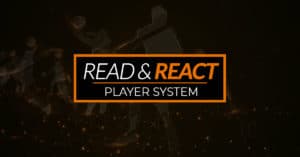Let’s say that you run a set play in a game that delivers a basket exactly like you planned it.
What’s the temptation?
There’s a voice that says, “We can do that EVERY TIME down the floor – with every possession. (This is the same voice that speaks to you after you make a great shot in golf. It says, “Yes! You can do that EVERY TIME you swing the golf club!)
So you spend 80% of your practice time working on a collection of these marvelously engineered set plays. Here’s the rub: As good as they are, and no matter how well you practice them, they’ll probably only account for about 20% of your scoring.
If you’re a Read & React coach, these set plays may be destroying the habits of the Read & React that account for 80% of your points! Also, how much more point production would you have if you used that “set play” practice time to grease the wheels of the Read & React?
One solution for this problem is to use Quick Hitters (from my Read & React Quick Hitters DVD) that are constructed of only Read & React actions. In this manner, your players are never breaking the reaction habits that you’ve been drilling since Day 1.
Another solution is to use your set play only at very special times. Put 80% of your practice time into the Read & React and you’ll get most of your point production without calling a set play. Then, when the defense least expects it and when you need it the most, you call your set play. Perhaps it’s after a time-out. Perhaps a hot hand has hit two 3-pointers in a row and if they hit a third one, it will change the momentum. Then by all means, use the set play!
Your players must see the set play as the exception and not the rule; the cherry on top of the dessert, not your meat and potatoes!







